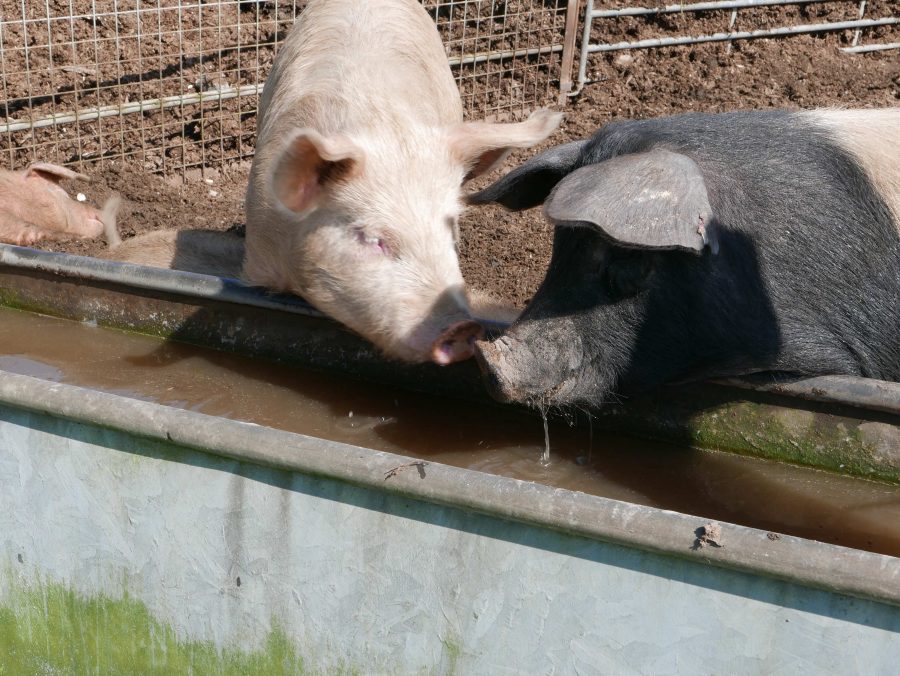The Country Smallholder explores the importance of providing adequate clean water for pigs…
Water consumption drives feed intake in pigs. You may, or may not, be surprised to learn, that 85% of growing pigs drink within 10 minutes of eating. Not providing enough good-quality, clean water will not only compromise pig health, but it will also affect growth and milk production.
Where possible, drinkers should be placed within 1-2 metres of feeders and should be accessible to pigs, without the need to disrupt other lying or feeding pigs. If you’re providing a wet feed mix, pigs still require a separate source of clean drinking water.
Even when you do have a good water supply, if it contains high levels of minerals or bacteria, this too can reduce feed intake. It can also cause problems such as diarrhoea, gastric ulcers, and aggression. We’ll look at water quality and cleaning another time, but in the meantime, have a think about what your pigs are drinking and whether you’d be happy to drink a glassful.
Do you know how much water your pigs consume in a day? It will vary, of course, depending on their age and stage of production. DEFRA provides a guide to the minimum daily water requirements for various weights of pig. One thing to bear in mind is that a lot of water can be spilled and wasted, so you’ll most likely need to provide more than the figures quoted.
During the winter, ensure that troughs don’t freeze over.
It’s also worth noting, pigs over two weeks of age must have continuous access to fresh drinking water. Are your troughs and drinkers accessible to piglets? If not, introduce some extra drinker points, e.g turkey drinkers or bowls, which piglets can reach. For those of you who use nipple drinkers, check the DEFRA Code of Recommendations for the Welfare of Livestock for information on drinker heights for different weights of pigs and flow rates.
For more information on this topic, visit the AHDB website, where you’ll find lots of fact-sheets and resources.
Read more on feeding piglets and pigs here.
More content like this can be found in The Country Smallholder magazine. Subscribe here.
For FREE updates from the world of smallholding, sign up for The Country Smallholder newsletter here.








